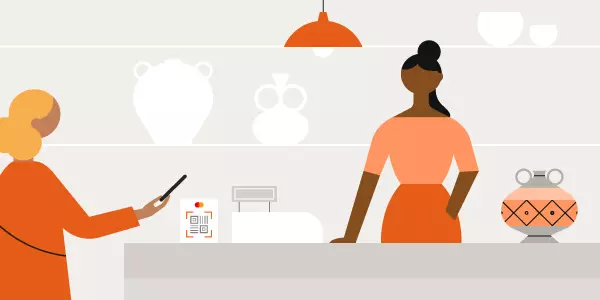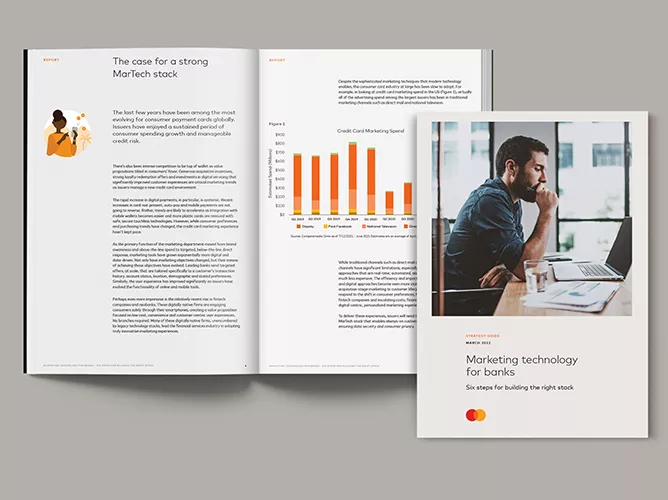July 7, 2022
Part 1: Overview
By Daniel Varkonyi, principal in client services
The traditional narrative has payment acceptance providing backup singing for card issuance on lead vocals. In reality, things have not been that way since digital payments stopped consumers from automatically handing their cards over at the point of sale.
Cards remain very much involved but increasingly not as tangible pieces of plastic. The consumer decision is now less about which card and more about which payment method. And alternative payments that tend to displace cash, such as account-to-account payments, then offer further opportunities.
So while continuing to process, underwrite and clear payments behind the scenes, acquiring banks and other payment service providers (PSPs) are now putting their acceptance solutions center stage.
While continuing to process, underwrite and clear payments behind the scenes, acquiring banks and other payment service providers (PSPs) are now putting their acceptance solutions center stage.
They need to do it well. Merchants can afford to be selective now that being a bank is no longer a prerequisite for offering other acquiring services.
Acceptance may be through a physical terminal or an online gateway—a boundary that continues to blur. For example, a contactless payment at a software point-of-sale (softPOS) terminal is increasingly hard to distinguish on the backend from a one-click payment at an e-commerce checkout. The blurring works for consumers on the frontend too, who expect connected experiences as they flit between channels and payment methods.
For established acquiring banks, the priority is not to end up as commoditized business bank accounts while nimble and innovative newcomers add value by better addressing changing consumer needs. For emerging PSPs, it is important to meet the expectations associated with the shift from being a fintech startup to an established financial institution.
This article is the first in a four-part series to help acquiring banks and other PSPs navigate this dynamic space. It provides an overview of the three main changes affecting them:
- Blurring of physical and digital boundaries
- Growth of alternative payments
- Shifting of relationships with retailers
Blurring of physical and digital payment boundaries
Consumers expect connections across offline and online channels. Those connections could mean a fulfillment center tied to an e-commerce marketplace or a physical showroom integrated with an immersive commerce website. A common example is how the in-store refund of an online purchase involves two channels. Payment options across channels, whether at offline terminals or online gateways, should be similarly interconnected and offer seamless consumer experiences.
Newer PSPs often have a niche proposition, such as a simple one-click payment button or a soft POS solution that allows anyone with a mobile device to become a retailer. Even when they have multiple propositions online and offline, the challenge is how to connect them so consumers can glide seamlessly between payment options. Yet they need to be careful; the increased convenience of a card-not-present transaction can also increase risk if not handled properly.
For established acquirers, the ability to deftly handle risk and navigate complex regulations comes with longstanding experience and expertise. Partnerships with independent software vendors (ISVs) and e-commerce marketplaces, which already provide solutions to retailers, can then keep them abreast of emerging technology. But they need to be wary of outsourcing so much value on the frontend that competitors can displace them. Between 2015 and 2020, the share of payments acquisition by ISVs increased from 4% to 10% and by marketplaces from 2% to 7%, according to the consultancy BCG.
Growth of alternative payments
For now, payment acceptance solutions from acquiring banks and other PSPs can still thrive with a primary focus on card-based payments. Many emerging trends, such as contactless payments or financing through Buy Now, Pay Later (BNPL), incorporate cards. For example, contactless spending habits tend to displace cash in markets with low card penetration by being quick and easy, and BNPL increasingly occurs on cards to benefit from existing payment networks.
Not all alternative payments end up on cards, but cannibalization of cards remains negligible since the impact is elsewhere. Account-to-account (A2A) payments are displacing cash in markets with real-time payment (RTP) networks and uniform QR code payment standards.

In other markets, open banking is giving A2A payments a boost by obviating the need for account information or passwords and allowing for automated transactions. Their appeal is found in areas like bill payments and charitable donations where the irreversibility of transactions and the lack of chargeback mechanisms are of limited concern.
Advances in payment technology will see a secondary focus on alternative payments increasingly come to the fore. Card payments aren’t going anywhere, but non-card payments will increasingly be part of the payments mix. Acquiring banks and other PSPs need to position themselves accordingly.
Shifting of relationships between retailers and payment service providers
Acquiring banks traditionally serve retailers on a one-to-one basis that allows for dedicated support. Further industry specialization may come through a partnership with an independent sales organization (ISO), which finds customers on behalf of an acquiring bank and then often handles payment processing as well.
Some PSPs, particularly ones focusing on larger retailers, also adopt a one-to-one model in the manner of acquiring banks. Others adopt an alternative model as payment facilitators (payfacs). They represent an evolution of the ISO model that caters particularly well to small business requirements. A payfac avoids the need for individual relationships with retailers by aggregating multiple retailers under one relationship and handling all processing and underwriting responsibilities.
The balance between ISO specialization and payfac convenience is delicate. Acquiring banks may partner with both, although the loss of brand presence on the frontend can be costly in the long term. Meanwhile PSPs operating as payfacs are starting to provide their capabilities as a service to retailers and other non-fintech partners by embedding payment acceptance capabilities into their businesses.
Conclusion
Back when payment acceptance was perceived more like backup singing, the term acquirer was short for acquiring bank. PSPs with a fintech rather than banking pedigree then eschewed the bank part.
Yet the diversification of acquiring revenue into other business areas, such as invoicing and liquidity management, does not impinge on the necessity to have a bank involved somewhere. The growing pursuit of banking licenses by PSPs with a fintech origin is not surprising. A comparison comes from the licensing of neobanks on the issuing side, some of which are now exercising their newfound clout to buy other fintech companies in the manner of established banks. The recent high-profile purchase of a BNPL provider by a PSP is telling.
Acquiring banks and other PSPs all face the same changes at the forefront of payment acceptance: the blurring of physical and digital boundaries, the growth of alternative payments, and the shifting of relationships with retailers. The successful ones will embrace the spotlight as agents of change by providing the tune for others to sing along to.
Read part 2 of the series here.
 | Daniel VarkonyiPrincipal in client services |











